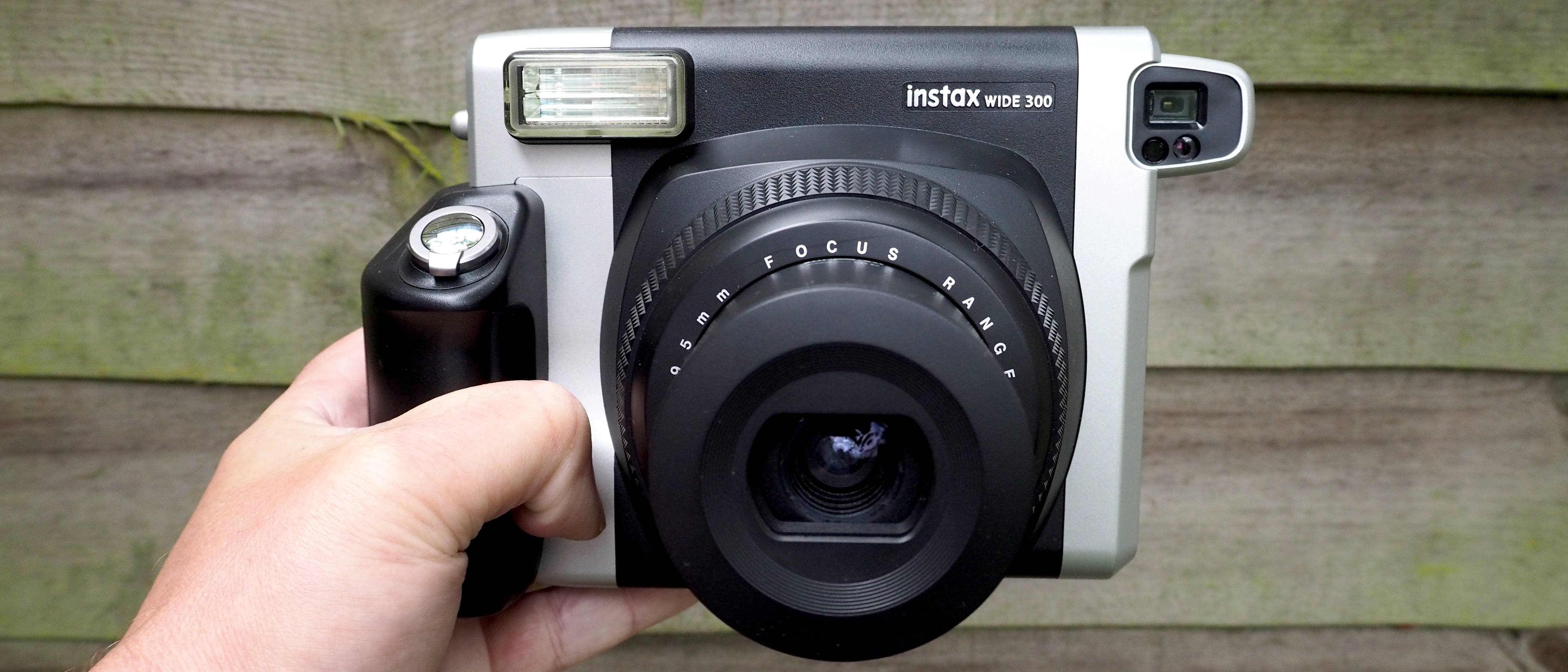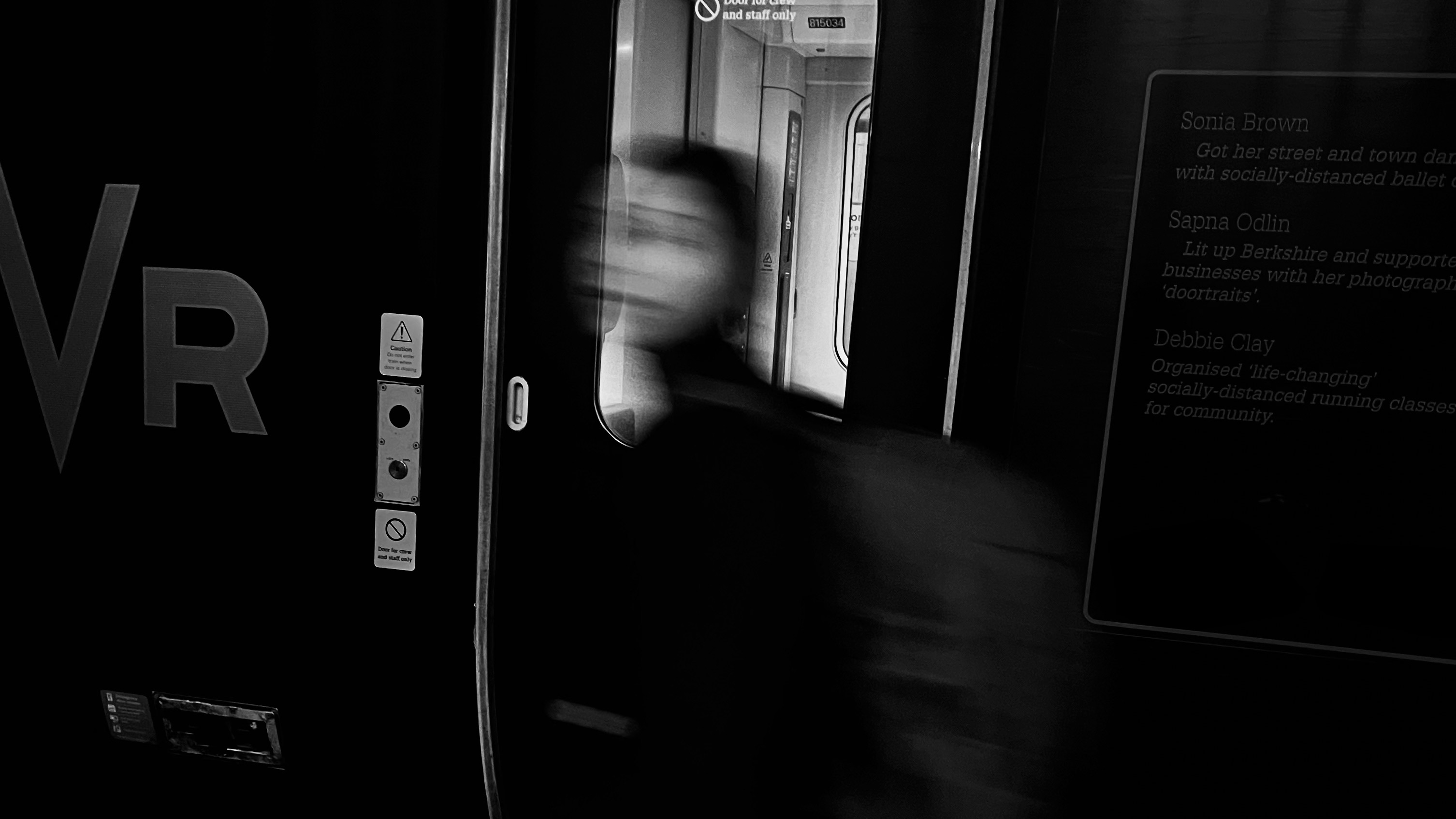Digital Camera World Verdict
The main appeal of the Fujifilm Instant Wide 300 camera is prints twice as wide as the credit card-sized alternatives output by the standard Fuji Instax 'mini' cameras in the range, presented in landscape as opposed to portrait format. The inevitable trade-off is however, a bulky camera body that is also double the size of its regular cameras, and one that struggles to look stylish or prove particularly portable with it. However when it comes to the pictures themselves, larger is definitely better in our book.
Pros
- +
Prints twice the width of most competing devices
- +
Bigger prints feel less like a ‘gimmick’ than credit card sized alternatives
- +
Easy to use and operate
Cons
- -
Bulky to transport
- -
Ugly design
- -
Requires 4x AAs for power
Why you can trust Digital Camera World
Credit card sized prints from the majority of instant print cameras are cute fun for the kids – who especially love them when they can be turned into stickers – but they’re probably not what most of us would want as our only memory of treasured places and occasions.
For those seeking instant printed output closer in size to the default 5x-7 inches of high street minilabs, or even classic Polaroid film, there’s the Fujifilm Instax Wide 300. Imagine two credit cards or business cards with their longest sides touching each other and we get a precise visual idea of the size we’re talking here. However the actual picture size if we discount the white border is a slightly smaller 62x99mm.
While we rate the larger output of this model over the smaller prints from most manufacturers of instant print camera today, an immediate downside becomes apparent as we heft the camera from its box: it’s a big one! Yes, prints twice as large/wide as is now the standard in turn requires a camera twice as large to be able to output them. Who knew?
Instax Wide 300: Specifications
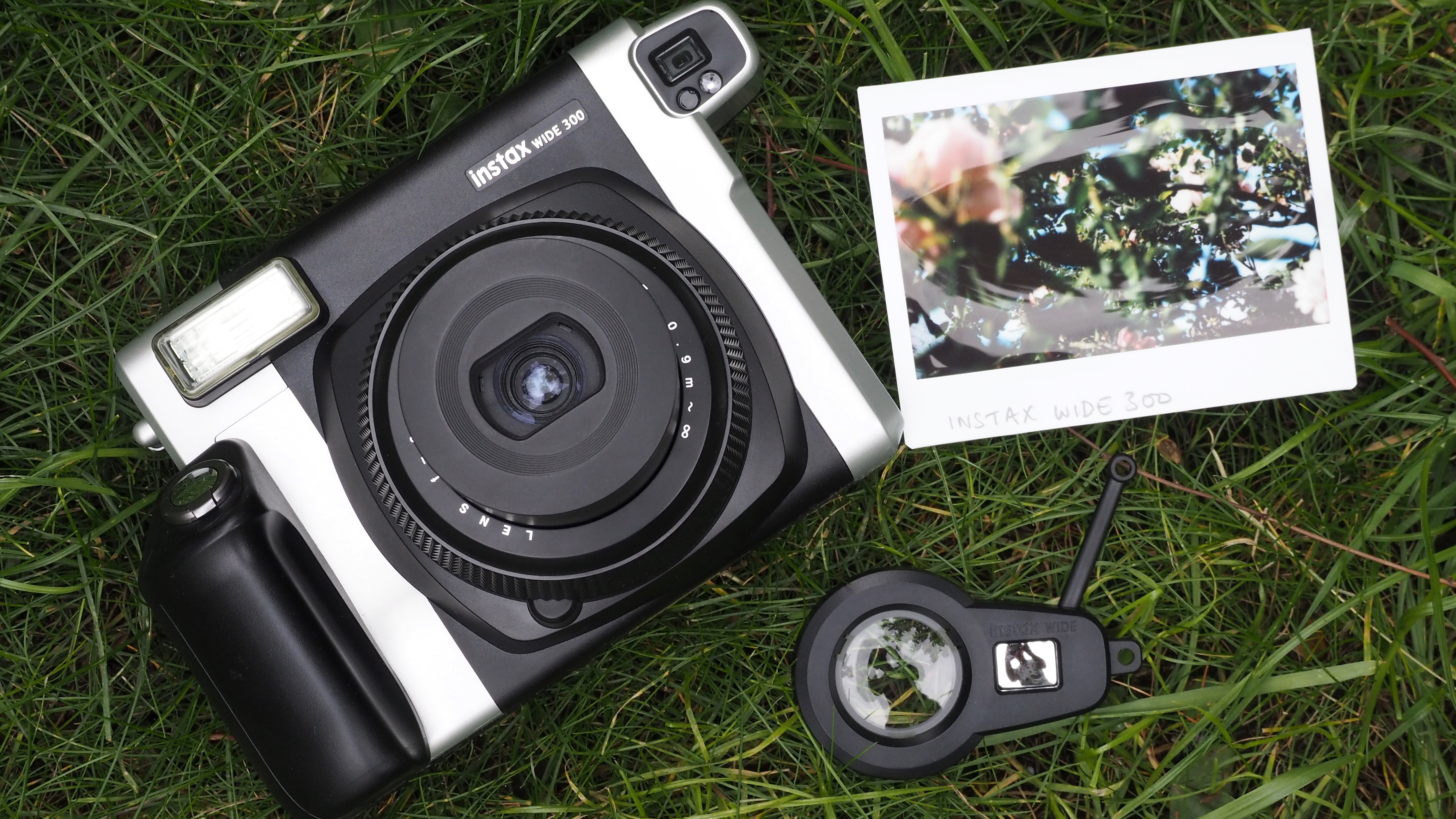
Sensor: N/A
Sensitivity range: Automatic, up to ISO800
Video: N/A
Lens: 95mm, f/14
Monitor: N/A
Viewfinder: Optical
Battery life: Up to 100 shots (10 film packs)
Dimensions: 167.8x94.7x120.9mm
Weight: 612g
Key features
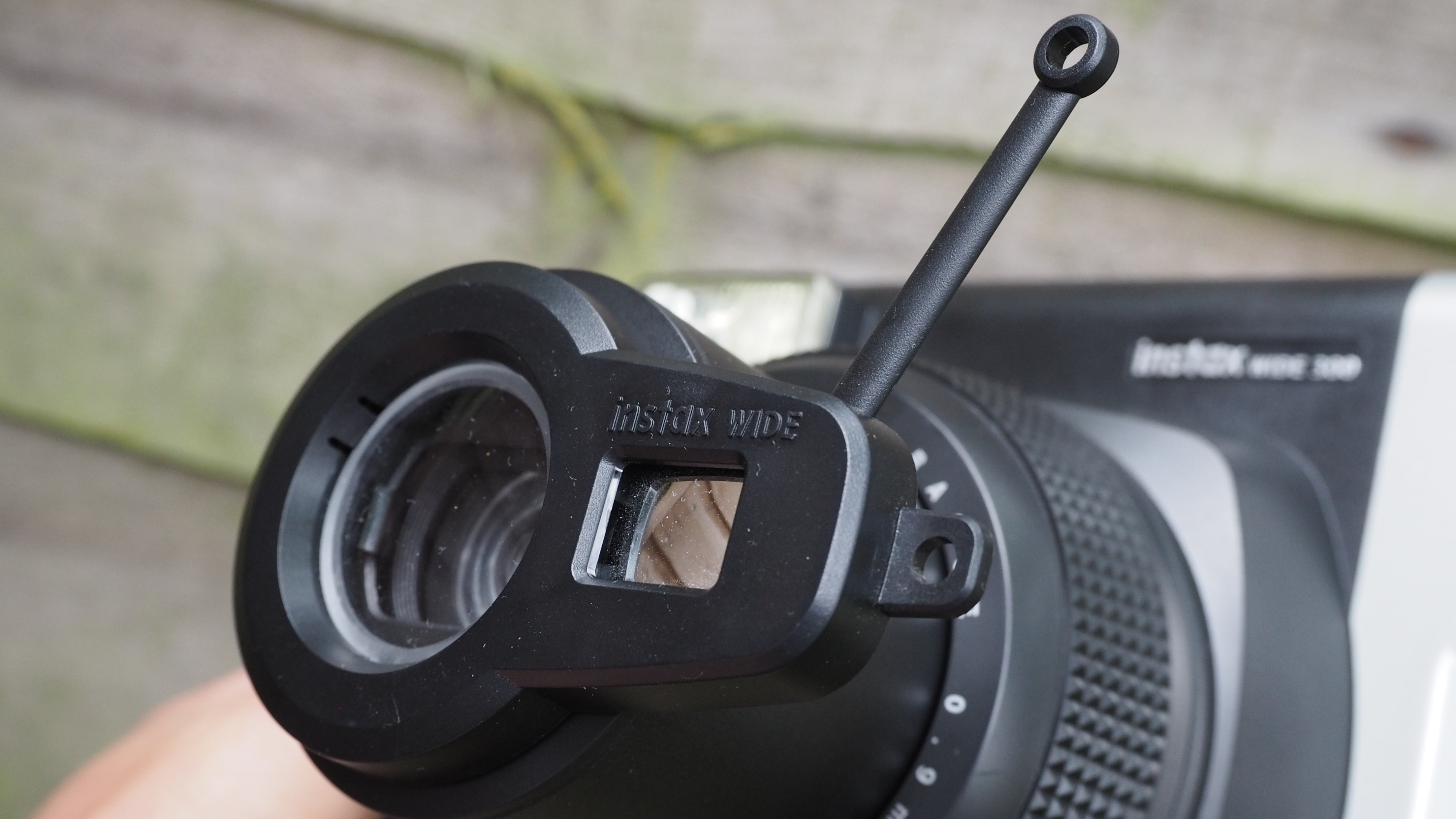
Purely analogue from the get-go, unlike Instax Mini Evo digital and analogue hybrid camera there’s no LCD backscreen or optional card slot provided on the Fujifilm Instax Wide 300. We don’t get a rechargeable lithium ion battery either. Keeping things distinctly old school, the camera requires four bog standard AAs for power, which were provided out of the box with our review sample. It would be sensible, however, for anyone considering buying this one to invest in a set of rechargeables in the same format. That said a set of four should last for use of up to 10 film packs, which is much more than the average user will be shooting sequentially. Or perhaps, ever.
The camera’s prime lens, which is large, mechanized and retractable, will focus from 0.9 metres to infinity, with its wide picture format, we reckon, best suited to group portraits. As well as a Normal mode, unsurprisingly there’s also a Landscape mode – the latter shifting minimum focus distance to three metres.
Happily, the lens features an automatic cover that slides shut when not in use, so no lens cap is required to avoid scratches or dust. Interestingly the Fuji also comes with a close up lens that resembles a Heath Robinson style contraption. This clip on lens incorporates a small mirror, suggesting it is primarily designed for selfies. In practical terms it shortens the focus range to just 40 to 50cm, making it suited to self-portraits at arm’s length, as long as our arms don’t tire in the process.
Versus
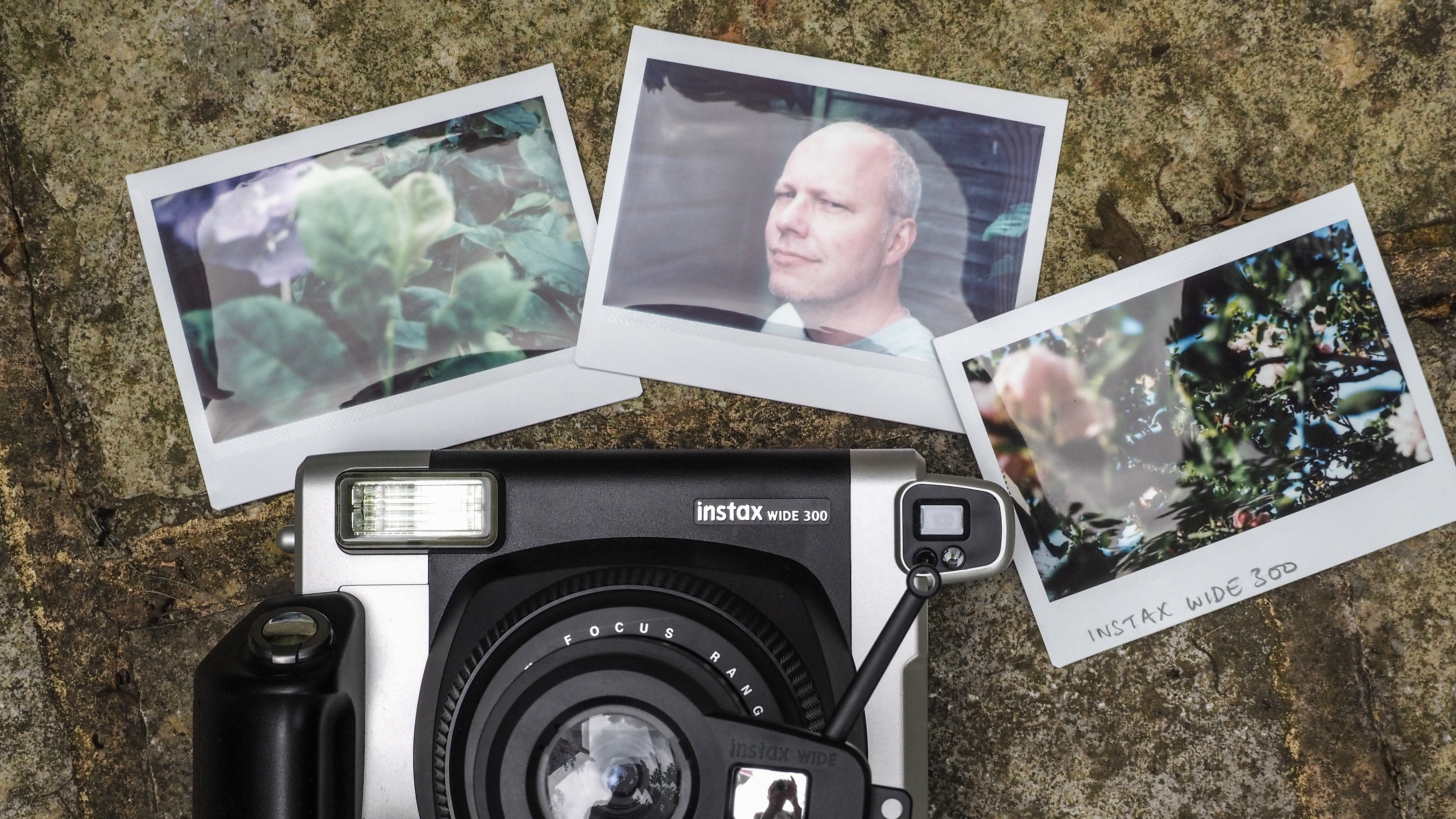
Polaroid, Canon and Lomography all offer competing product lines to Fujifilm’s Instax range, but – with the exception of the Lomo Instant Wide, which can use the same Fujifilm Instant Wide film packs – credit card sized prints, rather than the wide format here, is the order of the day.
If we want to ‘go large’ the Fujifilm Instax Wide 300 remains an enticing option in the marketplace, although the Lomography option is more feature rich for those who may manually enjoy some control over exposure. That said we do feel the larger film format utilised by Fuji here, closer to the Polaroid prints those of us who grew up in the 1970s and 80s will be familiar with, would be the one we’d keep over the output from its physically smaller Instant Mini film compatible cameras.
Handling
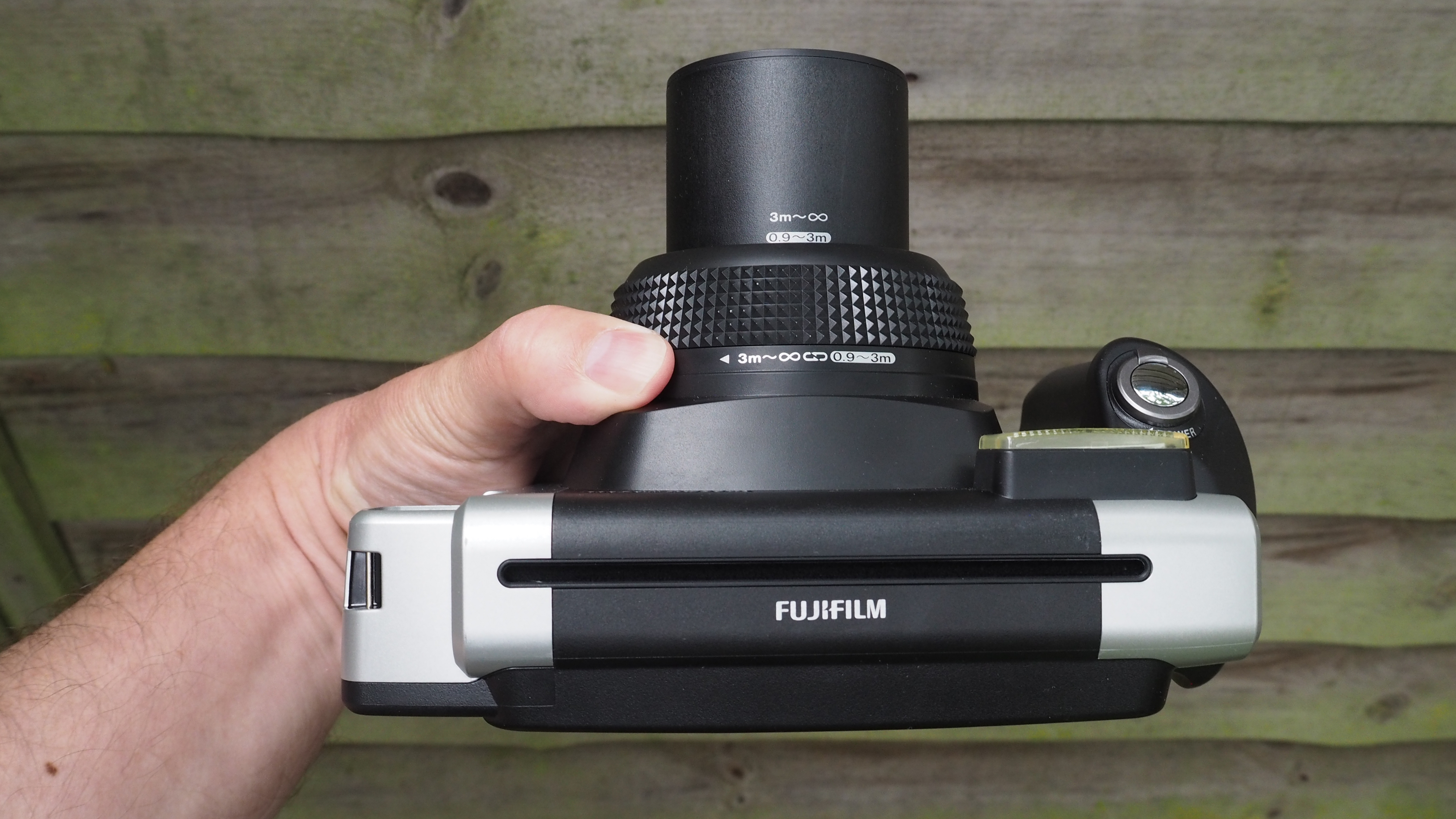
Putting practicality before style, the Fujifilm Instax Wide 300 looks like it fell out of the ugly tree and hit a couple of branches on the way down. If we were being kind, we would describe its hot-potch design, which resembles a camera drawn with a crayon by a five-year-old child, as a nod towards retro futurism; one for the hipsters perhaps. The original Polaroids were clunky and bulky too – but so was everything else in the 1970s/80s, and that was part of the charm.
Since this camera is chunky, the plastic nature of its build is even more obvious than on more affordable, smaller Instax models. That said, the Fujifilm Instax Wide 300 camera has a decent amount of weight to it (612g without any extras), especially with the four AAs required for power inserted into the base of the handgrip and a special Instax Wide colour film pack pre-loaded at the back. The shape means it’s not particularly confortable to hand hold however, so we’d recommend attaching the neck / shoulder strap that comes in the box with it.
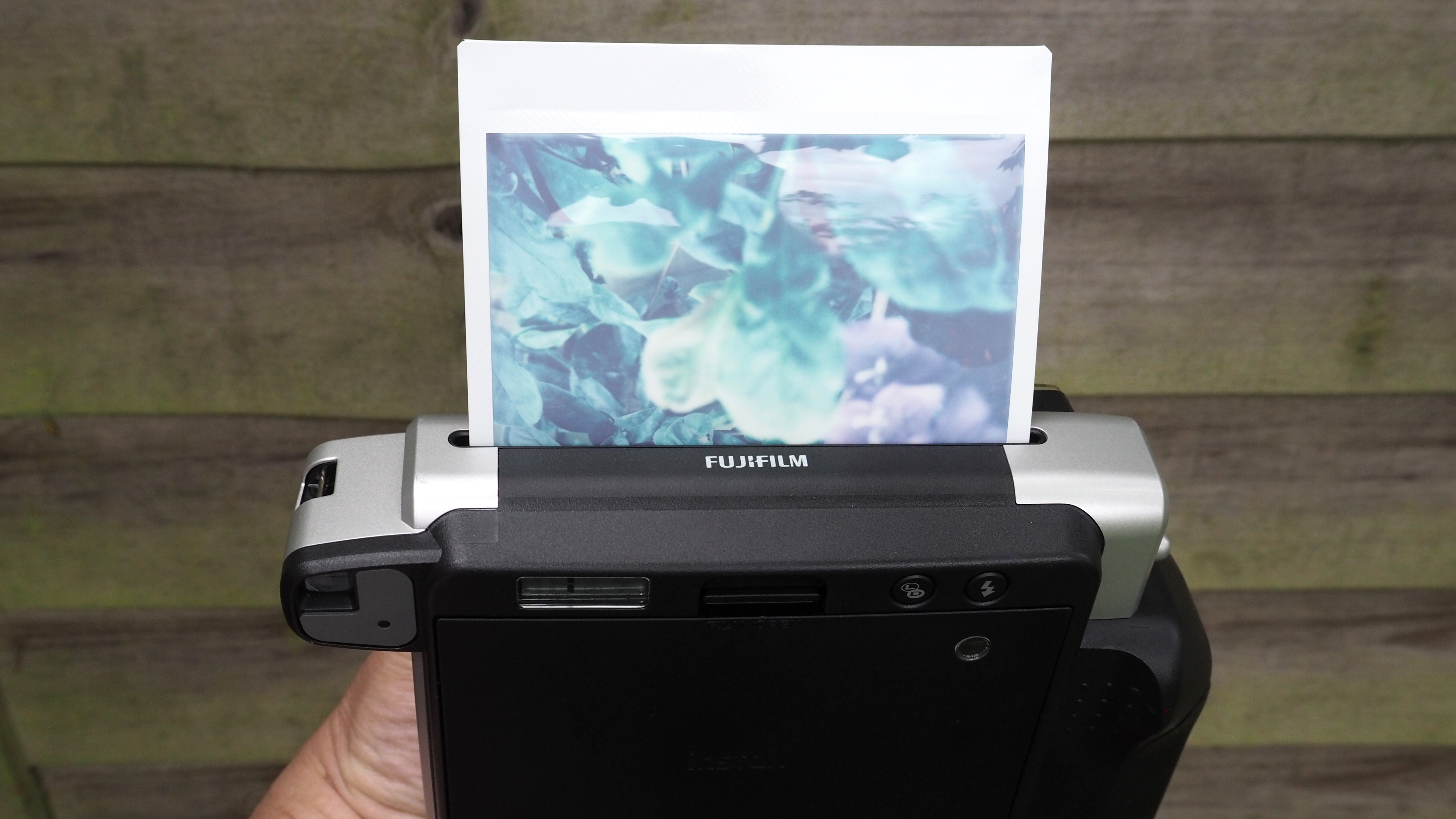
On the plus side, a physically bulky camera does mean that there is a enough ‘real estate’ for large and simple-to-navigate operational controls. However it needs a separate bag to carry it – the camera is too large to slip into any jacket pocket. We can see this one mostly being dug out of the cupboard for special occasions rather than shoot-from-the-hip, day-to-day usage.
Here there’s just the one main shutter release button, whether we’re shooting with the camera in portrait or landscape mode. Like with a DSLR, it is set at an angle on the forward slope of the handgrip, whereby it automatically falls under the forefinger. This same button is simply encircled by an on/off power lever, so we can activate the camera and soon be up and shooting in very few moves. For such a bulky camera the optical viewfinder provided is surprisingly small, yet the built-in flash, set somewhat forward of the faceplate to avoid fingertips getting in the way, is large and prominent.
The back of the camera, the location via which the pack of film is loaded, is left fairly clean, with two top right hand buttons provided for adjusting brightness and controlling the flash, while a narrow LCD display top left usefully reveals the number of shots remaining. All, in all, usage is pretty straightforward.
Performance
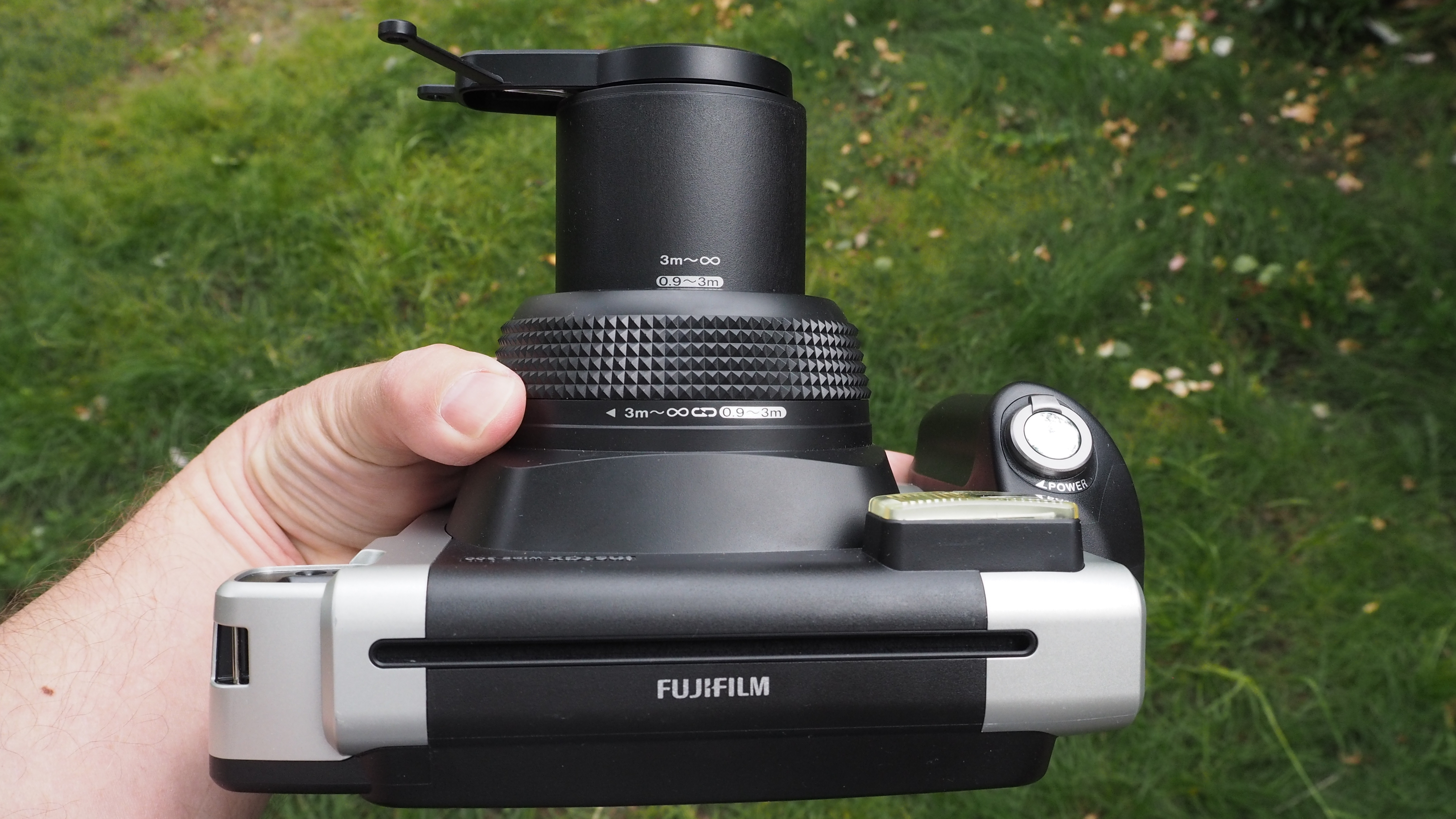
As noted above, the Fujifilm Instax Wide 300 is not particularly comfortable to hold or to operate, but of course it serves a purpose – namely to deliver larger than average 62x99mm pictures, or 86x108mm prints if we factor in and include the white borders.
One might imagine that a larger print size might show up the inadequacies of a plastic construction instant print camera – otherwise hidden by smaller, credit card sized prints – all the more. But we have to say that in outdoor lighting conditions we managed to achieve some very pleasant results, free of the usual bleached look of most instant prints.
That said, as with any instant camera without an LCD screen on the back it’s tricky to get framing exactly spot on, it’ll generally err on the side of over-exposure and so results are a bit hit and miss overall, retaining a degree of guesswork on behalf of the photographer. But the accessory close-up lens with built-in mirror for taking selfies certainly helps, and with the camera held at arm’s length focus is spot on. Any closer than arm’s length and even with accessory lens everything’s a blur, so its not really one for macro photography however. Still, we appreciated the color-rich, punchy look of the Fujifilm Instax Wide film packs, which is after all what makes the process one worth taking on in the first place.
Instax Wide 300: Verdict
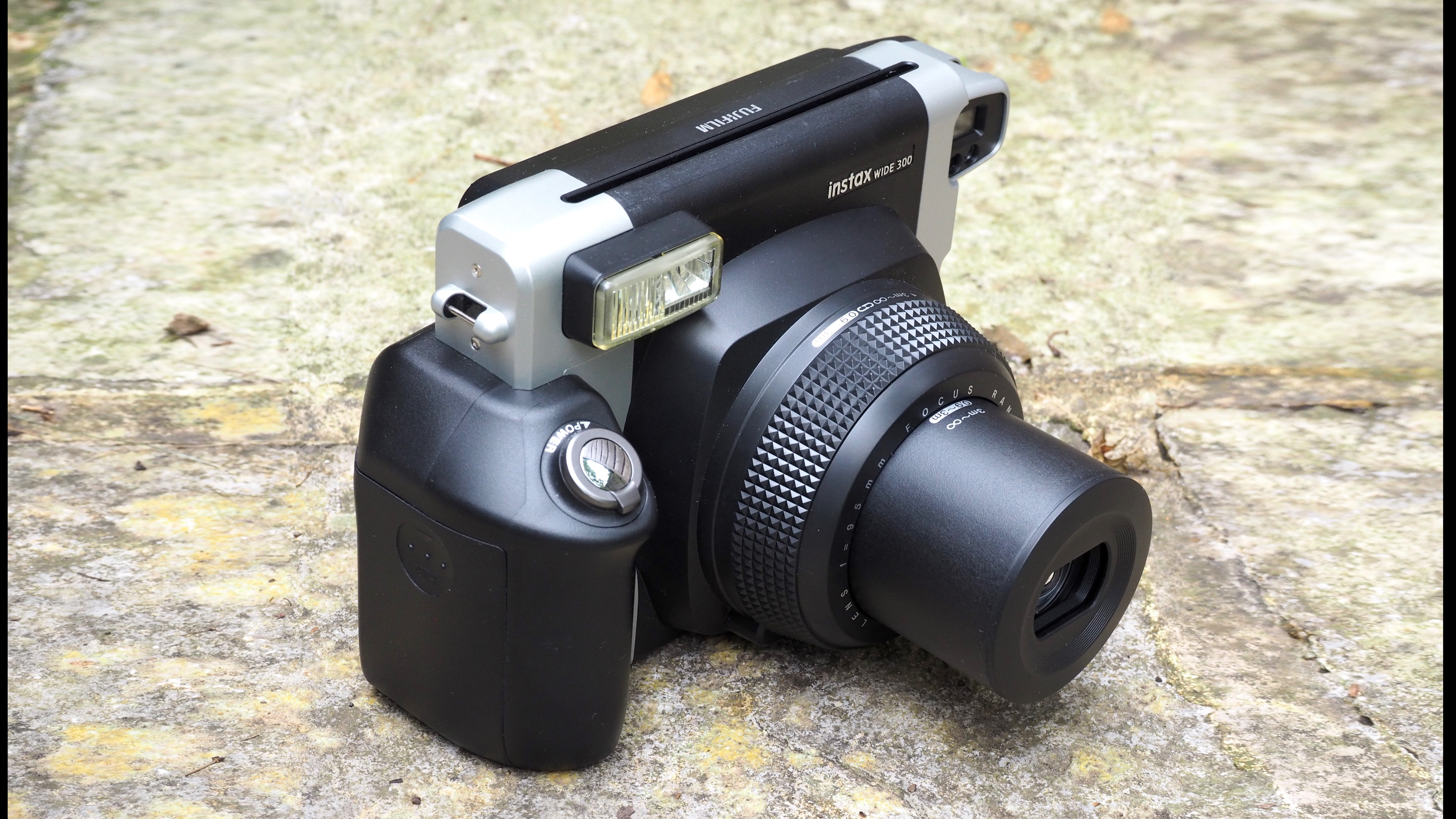
The Fujifilm Instax Wide 300 has been on the market for a while now and won’t be the instant print camera of choice for everyone. Yes, we love the larger prints but would happily forgo the larger camera size if we could achieve them.
Whether that’s a compromise you’re prepared to make is ultimately down to personal choice. But it’s certainly easy to use and we felt the larger prints were something we might actually keep as opposed to the more throwaway nature of the credit card sized alternatives from the majority of Fuji instant print devices. If you don’t mind the bulk, also check out the Lomo Instant Wide camera from Lomography, which utilizes the Fuji film packs but offers slightly more hands on control for those who want it, including the ability to set the camera to achieve long exposures and multiple exposure effects, as well as being slightly more switched-on when it comes to the look of the actual camera.
Read more
Best instant cameras
Cheap instax film deals
Best instax camera cases
Best digital instant cameras & hybrid cameras
The best Instax photo albums
Gavin has over 30 years’ experience of writing about photography and television. He is currently the editor of British Photographic Industry News, and previously served as editor of Which Digital Camera and deputy editor of Total Digital Photography.
He has also written for a wide range of publications including T3, BBC Focus, Empire, NME, Radio Times, MacWorld, Computer Active, What Digital Camera and the Rough Guide books.
With his wealth of knowledge, Gavin is well placed to recognize great camera deals and recommend the best products in Digital Camera World’s buying guides. He also writes on a number of specialist subjects including binoculars and monoculars, spotting scopes, microscopes, trail cameras, action cameras, body cameras, filters and cameras straps.
